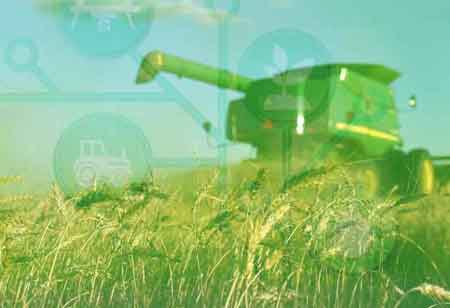Thank you for Subscribing to Agri Business Review Weekly Brief
The Role of Technology in Modern Precision Agriculture
Precision agriculture systems embody a progressive management methodology. These systems empower farmers to tackle a wide range of challenges effectively. This article delves into precision agriculture, its technologies, and the methods used.

By
Agri Business Review | Wednesday, March 12, 2025
Stay ahead of the industry with exclusive feature stories on the top companies, expert insights and the latest news delivered straight to your inbox. Subscribe today.
Precision agriculture systems embody a progressive management methodology. These systems empower farmers to tackle a wide range of challenges effectively. This article delves into precision agriculture, its technologies, and the methods used.
Fremont, CA: Precision agriculture systems represent an evolving approach to management practices in farming. These systems empower farmers to tackle a wide range of challenges. Additionally, precision agriculture includes various tools producers must master to optimize their yields.
Precision Agriculture
Precision agriculture employs advanced technologies, including satellite imagery and field mapping, to improve crop quality and increase profitability. It also maximizes the efficiency of conventional resources. Consequently, this agricultural management approach plays a significant role in promoting sustainable farming practices, addressing increasingly pressing economic and environmental challenges.
The technologies integrated into this system encompass GPS, drones, and satellite imagery. Utilizing this information, farmers gain insights into critical aspects such as crop health, weather predictions, and environmental shifts. A notable distinction between precision agriculture and traditional farming lies in the capability to manage fields as distinct zones rather than as a uniform area. This zoning facilitates tailored management strategies for specific field sections, including fertilizer application adjustments, machinery movement optimization, and more efficient fuel usage. Precision Agriculture Technologies and Methods Precision agriculture necessitates the use of specialized equipment and software for the collection and analysis of data. Given that precision farming technology relies on both hardware and software, the involvement of specialists is essential for their implementation. Nevertheless, with continued experience, farmers can eventually manage these technologies independently. Precision farming technologies can be categorized into three main types: ground, aerial, and satellite. Ground-based technologies are particularly effective for production planning, mapping, scouting, and machine control tasks. In contrast, aerial and satellite technologies address broader issues, such as real-time analysis of yield conditions from various locations. It is advisable to integrate these technologies to achieve accurate and objective data. Global Positioning System (GPS) GPS denotes a terrestrial technology that enables farmers to collect real-time data with precise location details. GPS technology in precision agriculture facilitates the operation of agricultural machinery. For instance, it enables farmers to navigate tractors effectively even in low visibility conditions caused by rain or fog. GIS Technology in Agriculture Geographic Information Systems (GIS) utilize object details and locational data to produce maps, including digital formats. Segmenting agricultural land into distinct zones necessitates the use of remote sensing technology. Each zone possesses unique characteristics, the evaluation of which requires the application of GIS and GPS technologies. Typically, these zones are categorized based on soil type, nutrient levels, soil moisture, pH levels, and pest presence.
The technologies integrated into this system encompass GPS, drones, and satellite imagery. Utilizing this information, farmers gain insights into critical aspects such as crop health, weather predictions, and environmental shifts. A notable distinction between precision agriculture and traditional farming lies in the capability to manage fields as distinct zones rather than as a uniform area. This zoning facilitates tailored management strategies for specific field sections, including fertilizer application adjustments, machinery movement optimization, and more efficient fuel usage. Precision Agriculture Technologies and Methods Precision agriculture necessitates the use of specialized equipment and software for the collection and analysis of data. Given that precision farming technology relies on both hardware and software, the involvement of specialists is essential for their implementation. Nevertheless, with continued experience, farmers can eventually manage these technologies independently. Precision farming technologies can be categorized into three main types: ground, aerial, and satellite. Ground-based technologies are particularly effective for production planning, mapping, scouting, and machine control tasks. In contrast, aerial and satellite technologies address broader issues, such as real-time analysis of yield conditions from various locations. It is advisable to integrate these technologies to achieve accurate and objective data. Global Positioning System (GPS) GPS denotes a terrestrial technology that enables farmers to collect real-time data with precise location details. GPS technology in precision agriculture facilitates the operation of agricultural machinery. For instance, it enables farmers to navigate tractors effectively even in low visibility conditions caused by rain or fog. GIS Technology in Agriculture Geographic Information Systems (GIS) utilize object details and locational data to produce maps, including digital formats. Segmenting agricultural land into distinct zones necessitates the use of remote sensing technology. Each zone possesses unique characteristics, the evaluation of which requires the application of GIS and GPS technologies. Typically, these zones are categorized based on soil type, nutrient levels, soil moisture, pH levels, and pest presence.





